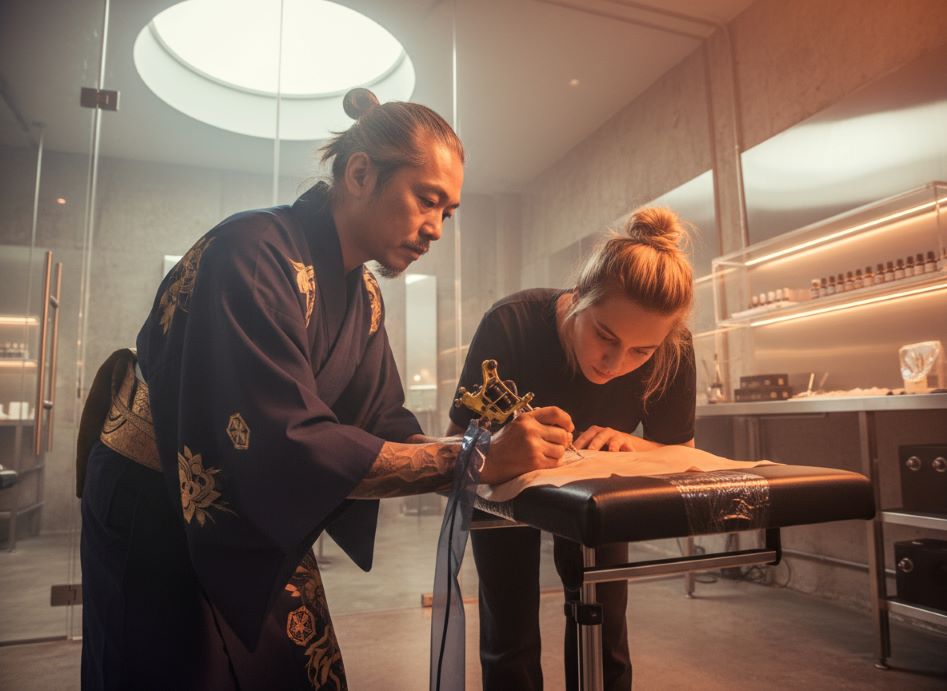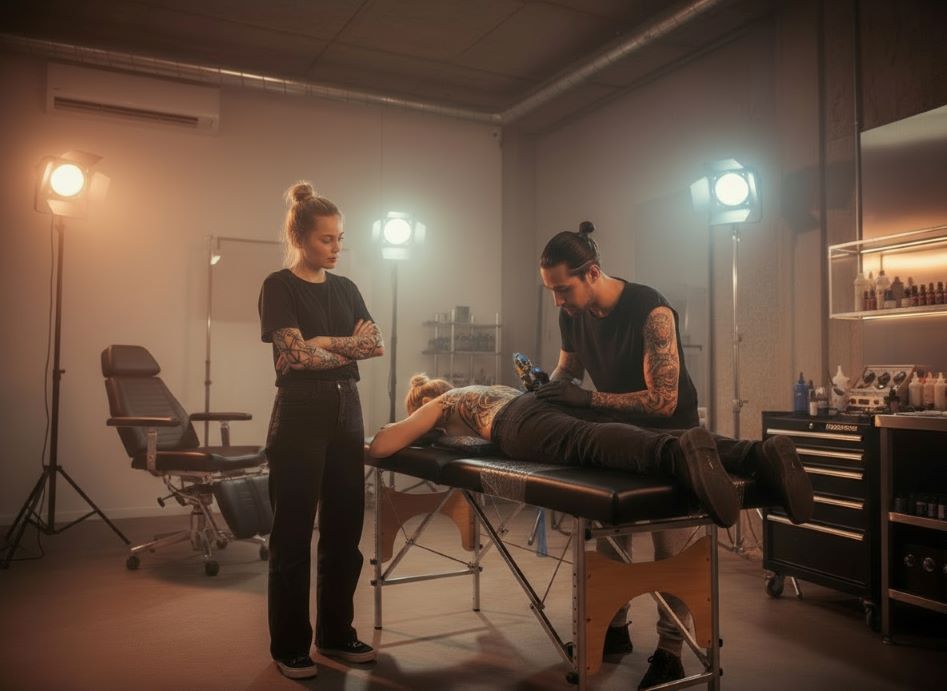The career path of becoming a tattooist is not the same as deciding to become an accountant. You cannot take a detour by going to the job centre, picking up a paper and emerging three months later with a diploma entitling you to be a decorator on skin. No, the route to becoming a tattooist is one of those wonderfully old-fashioned enterprises that requires such things as they call themselves, tradition, a mentor and plain old skill, rather than just a showy C.V.
The Great Age of Apprenticeship
The apprenticeship system goes back through centuries of craft and form. When Polynesian tattoo masters selected their apprentices it was not to see what sort of A-level results they had. Japanese tebori artists have handed down their needle techniques through the years with the same respect that medieval stone masons showed for their guild secrets. This was not red tape, but a matter of the SURVIVAL of an art.
The aspiring tattooist of to-day goes through a remarkably similar training. The normal training of tattooists does not begin with a needle, but with a mop. And a bin. And an autoclave which requires scrubbing out. Beautiful romanticism! But no, for there is a method in this apparent insanity. The professional tattooist should know all about sterilization, cross-infection and hygiene before he can be trusted with human skin. It is important.

Breaking Into Tattooism
The tattoo industry doesn’t have jobs advertised on LinkedIn. Becoming tattooed requires what our grandparents called “gumption”. Gumption is a word that has sadly fallen into disuse, along with sensible shoe sizes. Prospective apprenticeships must:
Develop an art portfolio that demonstrates drawing ability, especially in the areas expressed in the works. Japanese traditionalists will be unimpressed by your charcoal still life painting of fruit, but may be impressed by your knowledge of what the scales of koi are made from. Specialists in realism want to see how you render shadow and light. American traditional lovers look for bold outlines and successful use of color theory.
Be professional and persistent about going to tattoo studios. You should walk in with a physical portfolio rather than send DMs at 2 AM. Tattoo studio owners get thousands of requests for work from people who have seen too much TV and who think they will be the next Kat Von D. You must do something to separate yourself from that type of artist but is going to require talent and demonstrated motivation.
Apprenticeship: Where Dreams Intersect With Reality
A tattoo apprenticeship lasts from one to three years—although Japanese traditional apprenticeships can be longer, up to five years and more. During the period of apprenticeship, the apprentices will earn just about nothing—sometimes nothing at all. They are paying for their education in work, time and sometimes the embarrassing feeling of being sent out for left-handed ink.
The apprentice tattoo artist learns:
How to use the machines—coil versus rotary systems, voltage requirements, how to set up needles. There are more needle types than there are Kardashians, and each is intended for a different type of work. Liner, shader, magnum, flat—enough to make you dizzy.
To work on synthetic skin prior to doing work on human beings. These rubber practice pads will give you feedback without the threat of a lawsuit. Hours and hours of repetition builds muscle memory. The hand must learn to move at a constant speed, keep proper angles and find the proper depths. Too shallow and the ink fades away. Too deep and you have created scar tissue. You will need to learn anatomy and the different types of skins. Different areas must be treated differently from others. Tattooing the rib cage is not the same thing as tattooing the shoulder.
The skin stretches and has wrinkles and ages. A tattoo artist must be able to visualize the work of today and look at the work of decades from now.

The Licensed Professional
Tattoo artist requirements vary from area to area. Generally speaking, all areas require some sort of certification for blood borne pathogens, permits from the Sanitary Department and a business license. Some areas require formal courses of instruction, others use the apprenticeship method. The question of tattoo artist salary comes up and it is a lovely haze of an answer—depends! New tattooists may earn from £15000.00 to £25000.00 while they build up a clientele. Established tattooists in good shops will earn from £30000.00 to £60000.00 per year. Tattooists that have good technique, developed his own style and has a waiting list of customers? Well they are looking at the six figure income bracket, in fact there are some celebrity artists that charge thousands of dollars for each session.
Building a Reputation
The difference between the good tattoo artist and the master tattoo artist is the separating of wheat from the chaff. Technical know how is merely the cost of admission. The things that elevate the artist are: Developing a signature style whether this is some form of photo realism, which makes people gasp with its beauty, which is geometric accuracy which makes the spirit of Pythagoras rejoice or water colour effects that could never possibly work on the skin but that they do work fine.
Management of the Client Relationship
For you are now not only marking the skin but you are, too, at the same time, decorating a person’s jewellery for all eternity. The ability to listen and to interpret vague suggestions like “I want something that will mean something, you know” or to gently dissuade a person from horrible ideas, such as “Hello tattoo design of a face perhaps later on to get off into a large mural design of the same thing” Is going to be a great help. Life long learning, such as going to conventions, studying under guest artists and playing around with new techniques. The tattoo profession is one that does not reach the plateaus, unless, of course, you let it.
The Modern Master
The professional tattoo artist of today must do battle in art as well as commerce. Many eventually go into the opening of their own shop and have to be both, business manager and craftsman. Others are travelling artists, guesting at studios all over the world. Others specialize in cover up work in this particular form alleviating youthful regrets into the bearable adult version of body art, which is an undeniably public service. The advent of social media has very much changed the manner in which is gone about preparing a career as a tattoo artist.
Instagram now serves both as a portfolio and as an income producer. One post becoming a virus, can fill a booking calendar for months. Yet the fundamentals have not changed. It still takes a very great deal of talent, a great deal of the road of consistency and the ability to put on permanent art work on that most unforgiving of all canvasses, skin. The trip from frightened apprentice to confident master is still one of the last remaining fields of endeavor which are available to man, where there can be no shortcuts to the getting which is available. Constitutional talent in natural skill must be worked upon for years before it becomes terrific and where that result is rewarded by gaining of the due reputation, millimeter by millimeter or in simple terms, one satisfied customer at a time. Rather staggering, when you stop to think about it.

